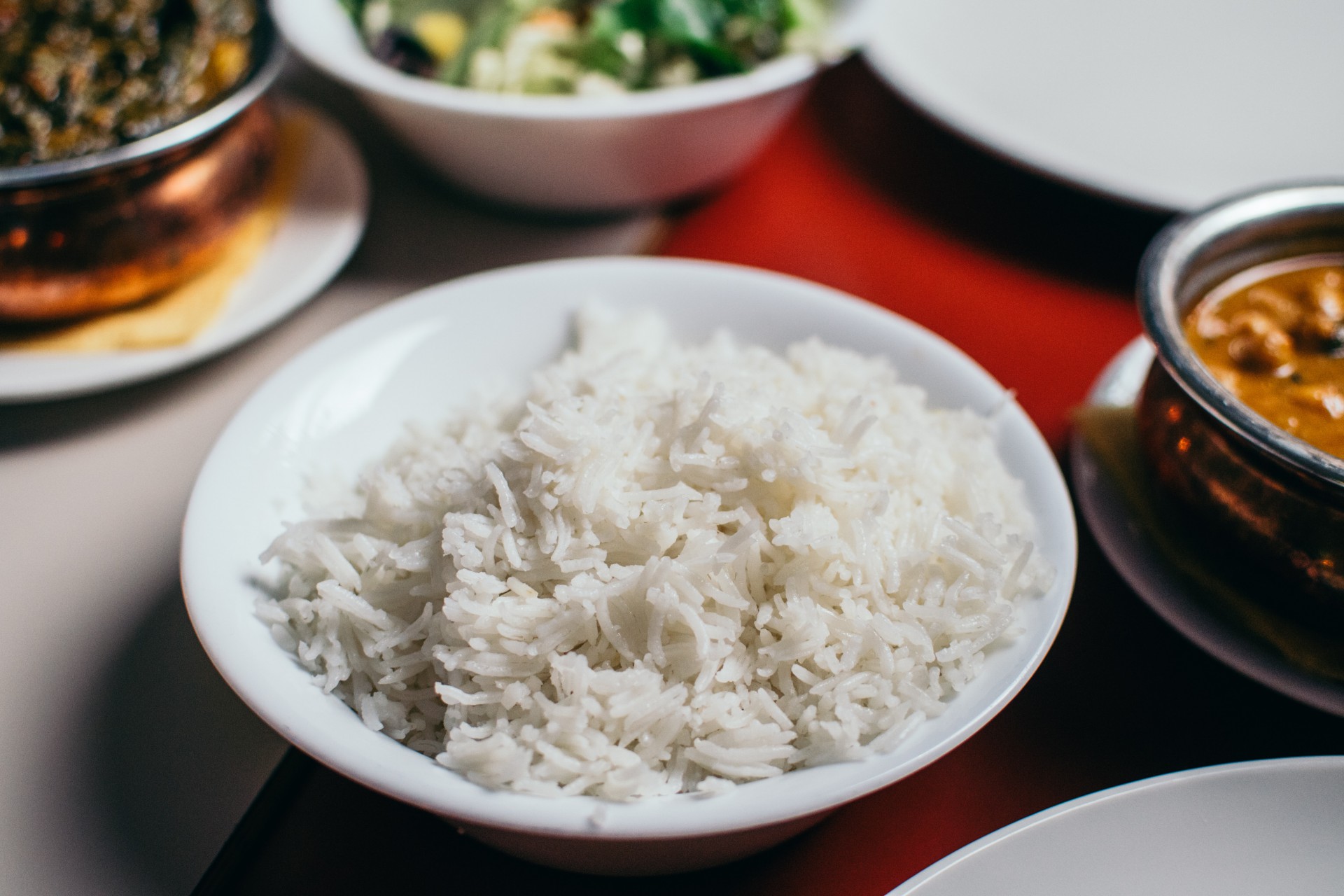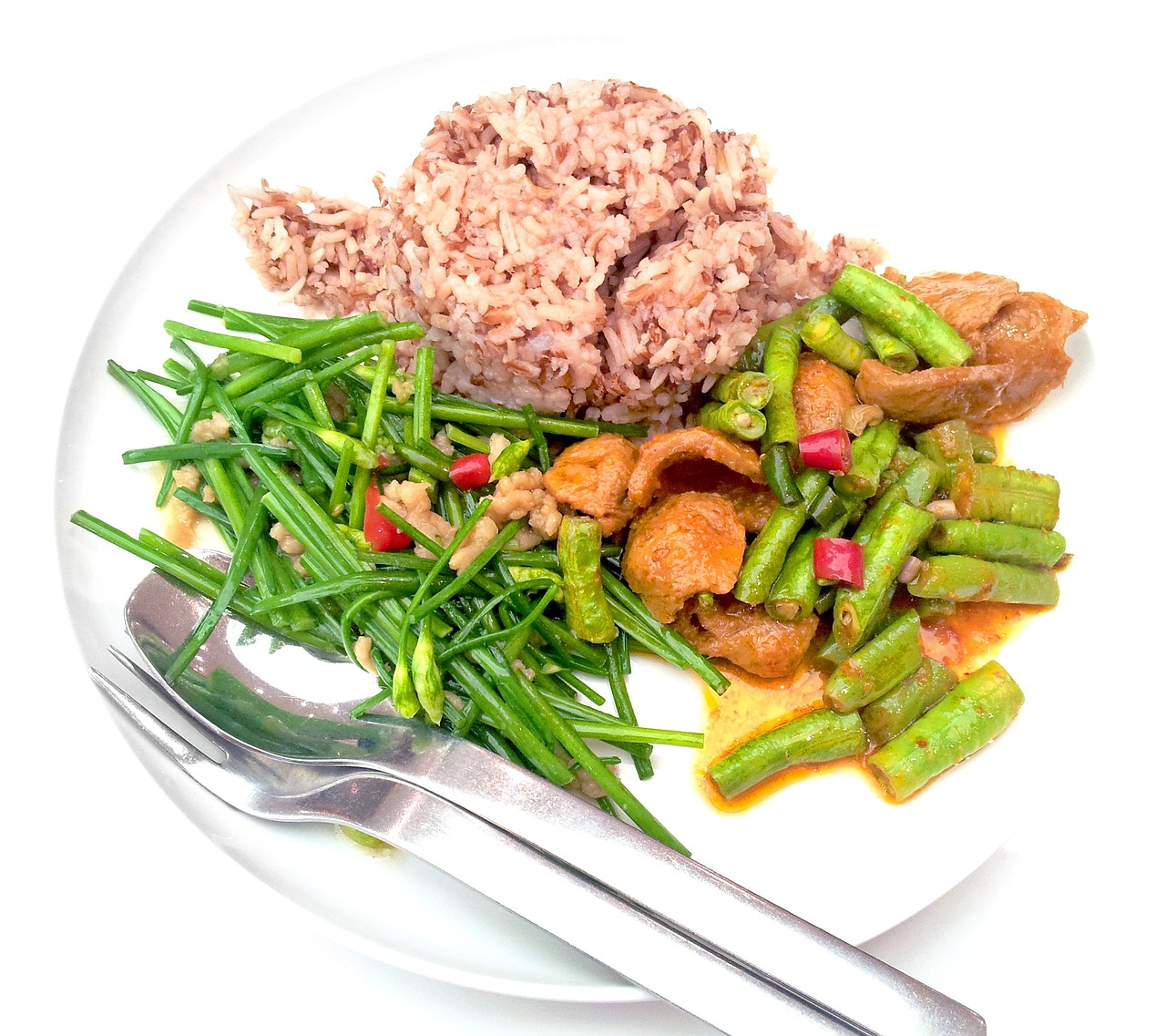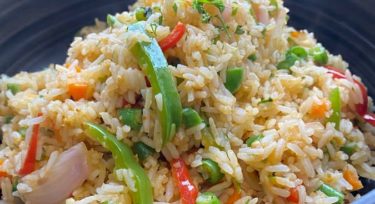
3. Contains Essential Nutrients
Apart from being loaded with carbs, white rice also has a sufficient amount of Vitamin D and other minerals such as calcium and Iron. These nutrients are crucial when it comes to the development of your bones, for which calcium and vitamin D act as a building block. Iron, on the other hand, is responsible for the production of hemoglobin, an oxygen-carrying cell in the bloodstream.
Also Read: Vitamin D Rich Foods | Benefits, Signs & Symptoms Of Vit D Deficiency
4. White Rice Is Fiber-Rich
The fibrous content of white rice is quite well-known; in fact, it is a contributory factor towards the filling nature of rice. Apart from that, the high-fiber content of white rice aids in weight management, as it prevents you from over-eating, and it also helps in tackling various digestive issues such as constipation, as fiber adds up to the bulk of the stool and promotes a healthy movement of bowel.

Yes, the carbohydrate and nutrient-rich nature of white rice can prove to be beneficial, but only when it is consumed in a certain limit. On the other hand, its heavy-consumption can have some adverse effects on your health. For example, it can lead to weight gain, the high carbohydrate and fiber consumption slows down your digestion process, thus if you consume more of it, you might just end up gaining a few pounds.
What Is Brown Rice?
This unprocessed rice is gathered by only removing the inedible outer covering, thus it appears brown due to the presence of the bran and germ layers, which are absent in polished white rice. The presence of these layers and its unprocessed nature ensures that it is nutrient content is denser as compared to white rice, and though some of its benefits may be similar to those linked with white rice (it is gluten-free and loaded with fiber), there are other completely different benefits associated with it too. Some of them are listed below:
1. Has Powerful Anti-Diabetic effects
The presence of the germ and bran layer in brown rice increases its fibrous content. As a result, brown rice takes longer to digest, as compared to white rice. Due to this prolonged time taken, sugar molecules are absorbed slowly, giving the pancreas an appropriate amount of time to secrete insulin (a hormone that breaks down sugar molecules into energy). This helps in lowering the risk of unnecessary sugar-spikes in the blood.
2. Brown Rice Has High-Antioxidant Property
Brown rice has a special antioxidant compound called superoxide dismutase, which protects the cells from the attack of harmful oxygen atoms. Hence, brown rice can be considered for its great free radical-scavenging properties and reducing the risk of oxidative damage in your cells.

Also Read: A To Z Of Antioxidant-Rich Food | Complete List Of Food Items To Fight Free-Radicals
3. Helps You Maintain Healthy Cholesterol Level
The nutrient-dense quality of brown rice is responsible for helping with lipid metabolism, thus regulating blood cholesterol. It helps in increasing the level of HDL cholesterol concentration.
4. Promotes Cardiovascular Health
Healthy cholesterol and blood-sugar level would ultimately mean one thing, a healthy heart. The beneficial nature of brown rice results in a proper supply of blood to the heart. The iron content in brown rice, on the other hand, increases the oxygen levels in the blood.

Apart from all the benefits, and just like white rice, brown rice can also prove to be damaging for your health if you consume it in large quantities. Its high-fibrous nature can cause some digestive issues such as irregular bowel movement and bloating.
Which Is Better?
The germ and bran layer does give brown rice a little bit of a nutrition boost, as it increases its fibrous nature and gives it antioxidant properties. In other words, though white rice itself won’t be as bad for your health, it still has less nutritional values when compared to brown rice.
Brown sugar cannot only be beneficial for aiding you in weight loss, but it also helps in maintaining your heart health.
Brown rice is a whole-grain as compared to its polished and processed counterpart. This is a more natural and nutritious variant out of the two. So if you are looking for a rice-grain that support your healthy lifestyle, then brown rice would be a better choice.
Here’s an interesting and simple sweet chilli fried rice recipe by Chef Vicky Ratnani you would love to try using any type of rice, including brown and white! Thank us later.
Sweet Chilli Fried Rice

If you are missing your favorite oriental food this lock down period, Chef Vicky Ratnani and Veeba Sauces save the day. Veeba Sweet Chilli Sauce, Veeba Hot Garlic Stir-fry Sauce, rice and some chopped vegetables is all you need. This recipe comes straight from the kitchens of Chef Vicky Ratnani.
Ingredients
- 1.5 Tablespoon Veeba Sweet Chilli Sauce
- 1 Tablespoon Veeba Hot Garlic Stir-fry Sauce
- 2 Cups Cooked rice
- 1 Medium sized Onion, sliced
- Half Cup Bell peppers, sliced
- 1 Medium sized Carrots, cubed
- Half Cup Green beans, chopped
- 1 Teaspoon Ginger, chopped
- 1 Tablespoon Vegetable oil
- 1 Tablespoon Coriander
Cooking Steps
- Start by heating some vegetable oil in a wok or kadhai.
- Add the prepped vegetables to the oil and stir fry for a minute or two. Then add the two cups of cooked white rice.
- Then go ahead and add the Veeba Sweet Chilli Sauce and Veeba Hot Garlic Stir-Fry Sauce.
- Stir-fry the rice, vegetables and sauces properly until the sauce is evenly mixed in. Season with some salt and pepper if required.
This recipe comes handy when you have some leftover rice at home, so you could prepare it in just a few minutes.












